Tennessee Historical Commission
This Tennessee Historical Commission marker is located outside the Hard Rock Cafe, in the 300 block of Beale Street, at the intersection of Beale Street and Rufus Thomas Boulevard, in Memphis, Tennessee.
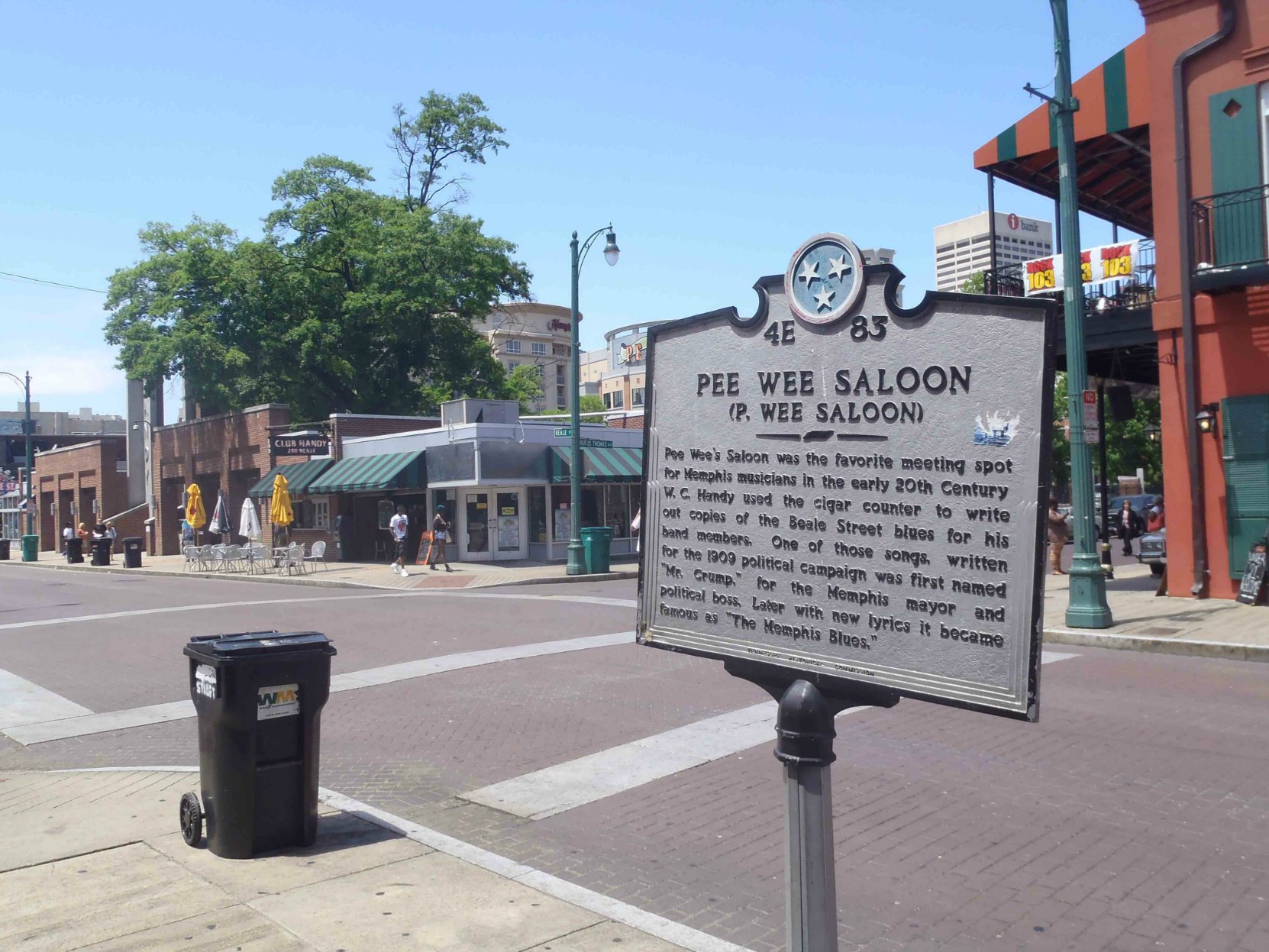
This marker reads:
“PEE WEE SALOON (P. WEE SALOON) – Pee Wee’s Saloon was the favoritte meeting spot for Memphis musicians in the early 20th century. W.C. Handy used the cigar counter to write out copies of the Beale Street blues for his band members. One of those songs, written for the 1909 political campaign was first named “Mr. Crump,” for the Memphis mayor and political boss. Later with new lyrics it became famous as “The Memphis Blues.” ”
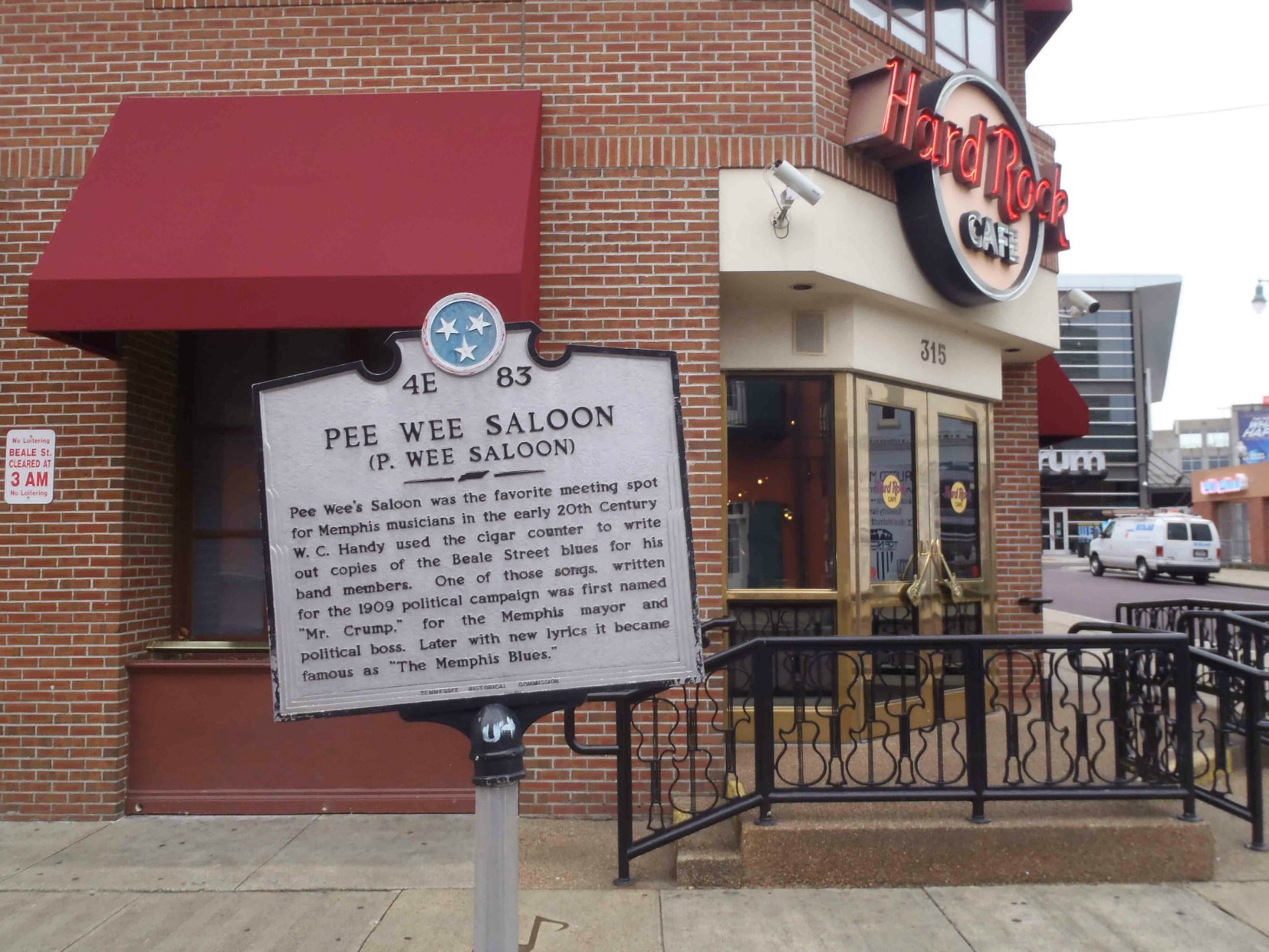
Pee Wee’s Saloon stood on the site now occupied by the Hard Rock Cafe at the corner of Beale Street and Rufus Thomas Boulevard. At that time, this section of Beale Street was the main area for music and musicians; today the music scene also encompasses the two blocks of Beale Street to the west.
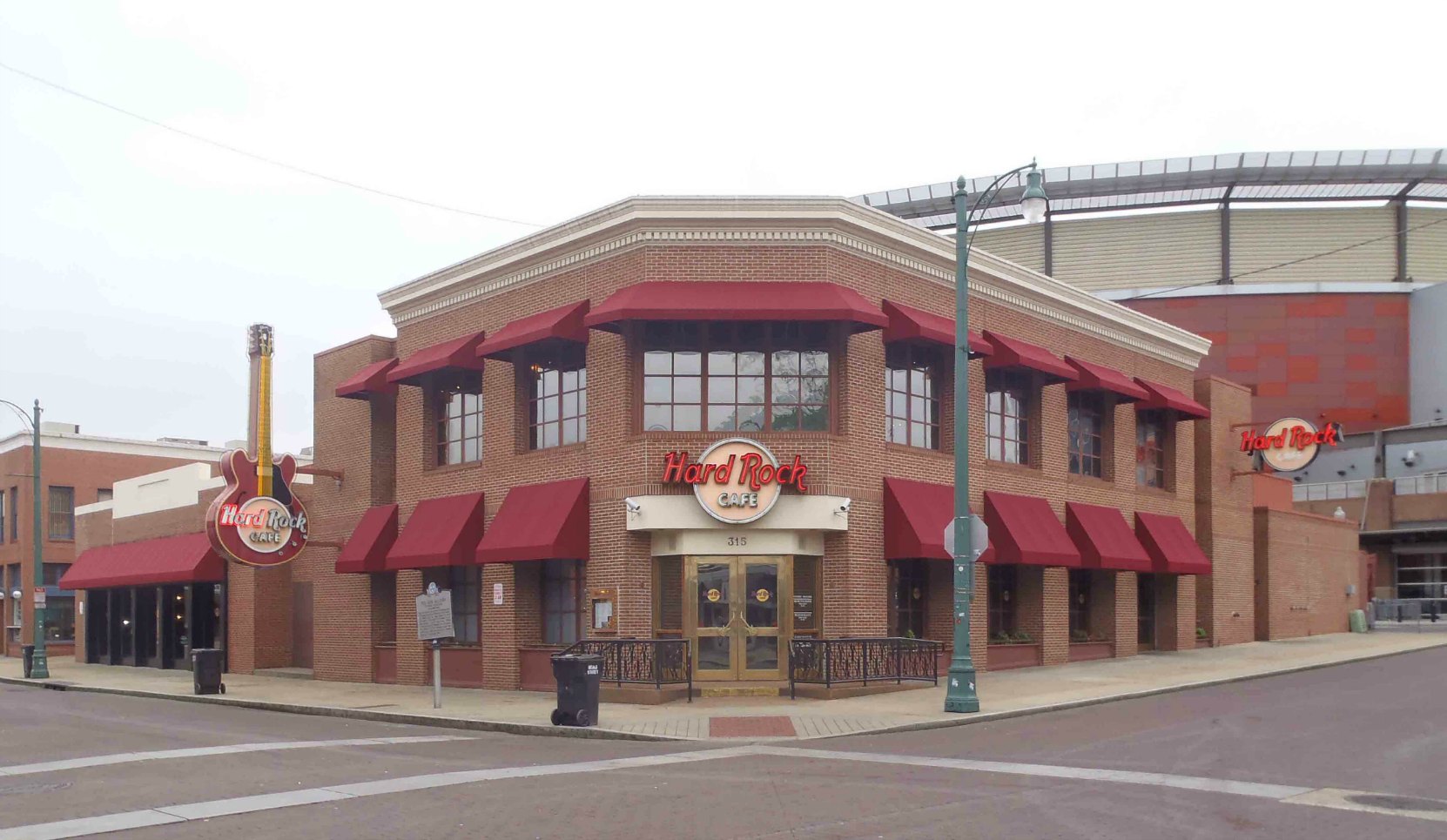
W.C. Handy described Pee Wee and Pee Wee’s Cafe in his 1941 autobiography, Father of the Blues:
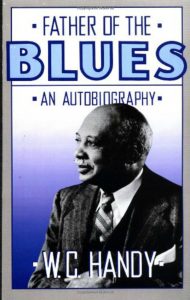
“The saga of Beale Street, as I knew it, goes back to a bright summer morning in the eighteen-eighties. A freight train slowed down and came to a stop in North Memphis. Presently a ragged immigrant boy, a dark-browed Italian youngster called Pee Wee, crept out from under one of the box cars. he had come all the way from New York on the rods.
For a moment Pee Wee stood blinking in the sun…..When the train pulled off again, the young hobo took his bearings and headed directly for the nearest water. On the banks of the Wolf River he slipped off his miserable shirt and pants, plunged into the stream and set about to remove the dust and soot and grime he had collected during the weeks spent in gutters, in ditches and on the rods of box cars……………”
W.C. Handy went on to say that Pee Wee made his way to Beale Street, wagered all his money (a dime) on a crap game and won enough money to support himself for a few weeks as he began a new life on Beale Street.
“When I first visited the city as a boy,” continued Handy, “Pee Wee was running a saloon on the corner of Hernado and Beale……….Later, Pee Wee moved to 317 Beale (now the site of the Hard Rock cafe on Beale Street) and his place became almost a landmark and a legend. Moreover, it was a headquarters for musicians…..
Through Pee Wee’s doors passed the heroic darktown figures of an age that is now becoming fabulous. They ranged from cooks and waiters to professional gamblers, jockeys and race track men of the period. Glittering young devils in silk toppers and Prince Alberts drifted in and out with insolent self-assurance. Chocolate dandies with red roses embroidered on cream waistcoats loitered at the door……….
It was perfectly natural that Pee Wee’s should become the headquarters for our band for a time at least, and in the fall of 1909 I often used to use his cigar stand to write out copies of the following lyric for visiting bands:
‘Mr. Crump won’t ‘low no easy riders here, Mr. Crump won’t ‘low no easy riders here, We don’t care what Mr. Crump don’t ‘low, We gon’ to the bar’l-house anyhow – Mr. Crump can go and catch hisself some air!’
The city was in the midst of a three-cornered campaign to elect a mayor, and our band was beating the drum for Mr. E.H. Crump, who was running on a strict reform platform. I had composed a special campaign tune for this purpose, but without words. We had played it, with success. Meanwhile, I had heard various comments from the crowds around us, and even from my own men, which seemed to express their own feelings about reform. Most of these comments had been sung, impromptu, to my music. My lyric was based upon some of those spontaneous comments, with my own development and additions. Luckily for us, Mr. Crump himself didn’t hear us singing these words. But we were hired to help put over his campaign, and since I knew that reform was about as palatable to Beale Street voters as castor oil, I was sure those reassuring lyrics would do him more good than harm.
I can’t say that my campaign tune contributed to this result, but at any rate it has another claim. Its musical setting, which I afterwards published under the new title Memphis Blues, was the first of all the many published “blues,” and it set a new fashion in American popular music and contributed to the rise of jazz, or, if you prefer, swing, and even boogie-woogie…….”
W.C. Handy compositions about Beale Street and its clubs include: Beale Street Blues (click here for Louis Armstrong download version) and Memphis Blues (click here for Louis Armstrong download version)
Here’s a video of W.C. Handy performing Memphis Blues in 1938.
Here’s a video of the Canadian Brass doing Beale Street Blues
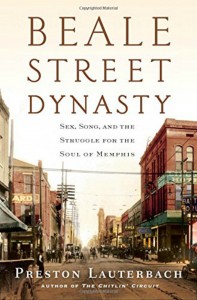
If you want to do more historical research on Beale Street before you visit Memphis, one of our Recommended Books is Beale Street Dynasty by Preston Lauterbach.
This book contains a lot of interesting historical information about Memphis in general and Beale Street in particular, including coverage of Mayor E.H. Crump and W.C. Handy’s music for the Memphis civic elections of 1909.
Would you like to leave a comment or question about anything on this page?